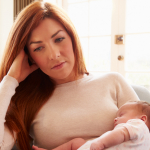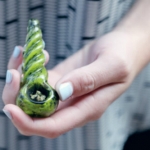Illicit opioid use has steadily increased over the past decade, and this increase is most prominent in the 18–25 age group, which includes women of reproductive age (Substance Abuse and Mental Health Services Administration, 2013). Paralleling this increase in illicit opiate use in this population has been a significant increase in the use of prescription opioids for pain management. As a result of this increase in use and abuse of opioids, we have seen that between the years of 2003 and 2013, the frequency of hospital deliveries complicated by maternal opioid use has increased from 1.3 to 8.1 per 1,000 hospital deliveries among rural mothers and from 1.6 to 4.8 per 1,000 hospital deliveries among urban mothers.
There has been a dramatic increase in the number of infants born with symptoms of opioid withdrawal. Various factors may influence risk for neonatal withdrawal symptoms, including type and dose of opiates taken by the mother, as well as duration and timing of the exposure. A recent study from Huybrechts and colleagues indicates that infants born to mothers who take prescription opioids in combination with certain psychotropic medications during pregnancy may experience even higher rates of opiate withdrawal.
Analyzing data from a nationwide sample of pregnancies included in the Medicaid Analytic extract (2000-10), the researchers examined the outcomes of 201,275 pregnant women who were exposed to opioids proximate to the time of delivery. Risk for neonatal drug withdrawal was assessed in infants with prenatal exposure to opioids and psychotropic medications as compared to infants exposed to opioids alone.
The absolute risk for neonatal drug withdrawal was 1.0% in infants prenatally exposed to prescription opioids alone. (This study looked only at prescribed opioids and did not measure risk in women abusing opioid drugs. Rates of neonatal withdrawal are higher among pregnancies complicated by illicit opioid use.) When opiates were coadministered with certain psychotropic medications, the risk for neonatal drug withdrawal increased. When combined with antidepressants, the adjusted relative risk antidepressants was 1.34 (95% confidence interval 1.22 to 1.47), with benzodiazepines 1.49 (1.35 to 1.63), with gabapentin 1.61 (1.26 to 2.06), with antipsychotic agents 1.20 (0.95 to 1.51), and with sedative-hypnotic drugs 1.01 (0.88 to 1.15). Exposure during pregnancy to two or more psychotropic medications along with opioids was associated with a twofold increased risk of withdrawal (2.05, 1.77 to 2.37).
It is not so surprising that risk of neonatal withdrawal symptoms is increased when opioids are combined with benzodiazepines or antidepressants, given that these two classes of medications have been associated with neonatal withdrawal symptoms in previous studies. However, it is noteworthy that gabapentin (or Neurontin), when combined with opioids, increases risk for withdrawal symptoms. Given that gabapentin is being more commonly used for pain management, the combination of gabapentin and opioids may occur quite commonly. In addition, gabapentin is frequently used by those abusing opiates because it potentiates and prolongs the effects of opioids.
Ruta Nonacs, MD PhD
Huybrechts KF, et al. Risk of neonatal drug withdrawal after intrauterine co-exposure to opioids and psychotropic medications: cohort study. BMJ 2017.







Leave A Comment